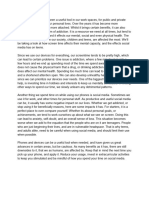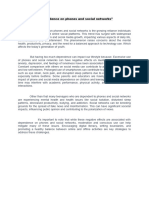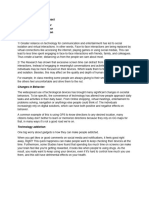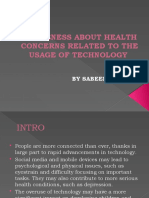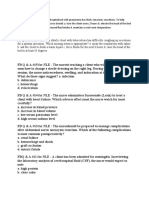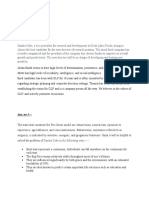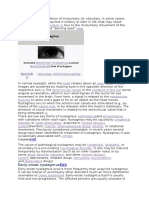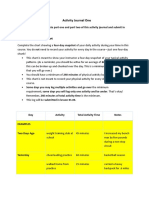0% found this document useful (0 votes)
11 views4 pagesTechnology Disadvantages
Excessive reliance on technology poses significant risks to physical, mental, and social health, including issues like eye strain, anxiety, and reduced attention spans. It can lead to social isolation, hinder the development of communication skills, and contribute to addiction behaviors. Particularly concerning is the impact on children and adolescents, who may face delayed language development and exposure to online dangers.
Uploaded by
8725bfe70afbCopyright
© © All Rights Reserved
We take content rights seriously. If you suspect this is your content, claim it here.
Available Formats
Download as PDF, TXT or read online on Scribd
0% found this document useful (0 votes)
11 views4 pagesTechnology Disadvantages
Excessive reliance on technology poses significant risks to physical, mental, and social health, including issues like eye strain, anxiety, and reduced attention spans. It can lead to social isolation, hinder the development of communication skills, and contribute to addiction behaviors. Particularly concerning is the impact on children and adolescents, who may face delayed language development and exposure to online dangers.
Uploaded by
8725bfe70afbCopyright
© © All Rights Reserved
We take content rights seriously. If you suspect this is your content, claim it here.
Available Formats
Download as PDF, TXT or read online on Scribd
/ 4





